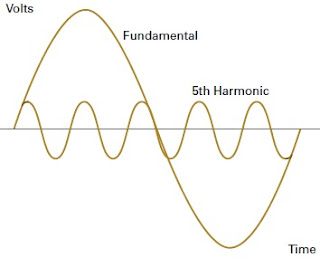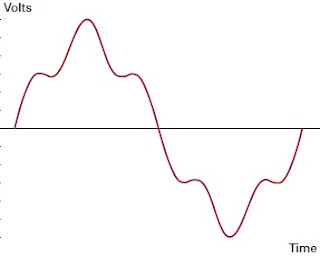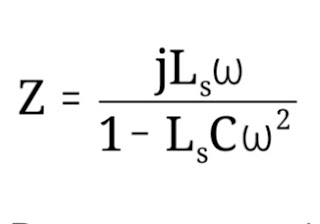What is Harmonics in Power System,Generation,Effect
What is harmonics in power system?
 |
| Fundamental and 5th Harmonic
|
For example, 300 Hz (5 x 60 Hz) is a 5th order harmonic of the fundamental frequency (Figure 1). Figure 2 shows the resultant wave when the fundamental and 5th harmonics are combined.
 |
| voltage wave distortion |
The result is the harmonic distortion of the power waveform. Harmonics typically seen on a power system can be subdivided into two distinct categories by the nature of the problems they create and the remedies they usually require.
Those power system harmonic currents that are the dominant harmonic orders created by three-phase nonlinear loads—5th, 7th, 11th, 13th, and higher-order odd harmonics that are not multiples of three. Those harmonics created primarily by single-phase nonlinear loads—3rd order harmonics and higher multiples of three.
These are sometimes referred to as triplet or zero-sequence harmonics and are usually accompanied by some 5th, 7th, and other higher-order harmonics. Harmonics are a steady-state phenomenon and should not be confused with short-term phenomena that last less than a few cycles.
Some of these short-term disturbances in voltage or current can be mitigated by transient voltage surge suppressors, line reactors, or isolation transformers. However, these devices usually have little, if any, the effect on harmonic currents or voltages.
The THD (for a voltage waveform) is given by the following formula:
 |
| THD (for a voltage waveform) |
How are harmonics generated in the power system?
Power System Harmonics are generated by nonlinear loads. A nonlinear load is a circuit element that draws current in a nonsinusoidal manner. Until recently, most factory loads were primarily linear, with current waveform closely matching the sinusoidal voltage waveform and changing in proportion to the load.
More recently, however, factory loads with major nonlinear components have increased dramatically. Nonlinear devices that cause the most problems can generally be grouped into two categories electronic power converters and arcing devices.
Electronic power converters
An electronic power converter changes electrical energy from one form to another, typically by rectifying the AC voltage into DC and utilizing the DC voltage directly or synthesizing a new AC voltage.This change is accomplished by using solid-state devices—silicon control rectifiers (SCRs), diodes, transistors—to periodically switch in the conducting circuits of the converter.
Below are some common names that are typically associated with electronic power converters.
• Variable frequency drives
• SCR drives
• AC motor drives (AC/DC/AC)
• DC motor drives (AC/DC)
• Three-phase full-wave rectifiers
• Three-phase full-wave converters
• Six-pulse converters
Arcing devices
Other equipment
Effect of harmonics
Resonance
Consider the simplified diagram below, showing an installation made up of:
- a transformer supplying power,
- linear loads,
- non-linear loads causing harmonic currents,
- power factor correction capacitors.
Resonance occurs when the denominator 1-LsCω2 approaches zero. The corresponding frequency is called the resonant frequency of the circuit.At this frequency, the impedance is at its maximum value, resulting in considerable voltage harmonics and consequently major voltage distortion.
This voltage distortion is accompanied by the circulation of harmonic currents in the Ls + C circuit which are greater than the injected harmonic currents. The distribution system and the power factor correction capacitors are subjected to considerable harmonic currents, resulting in the risk of overloads.
Increased losses
Losses in conductors
 |
| Total harmonic distortion (THD) |
